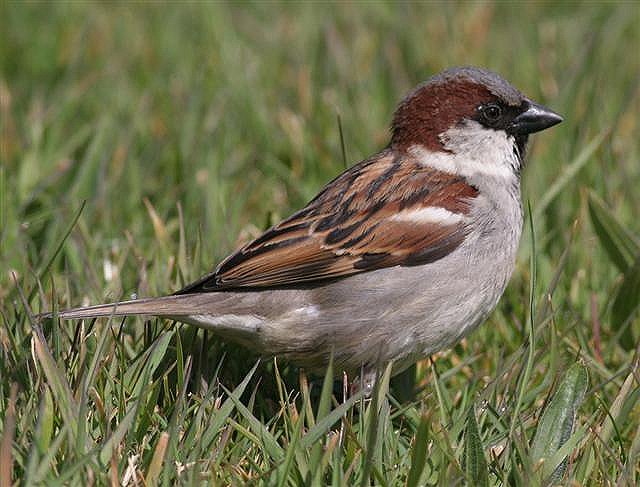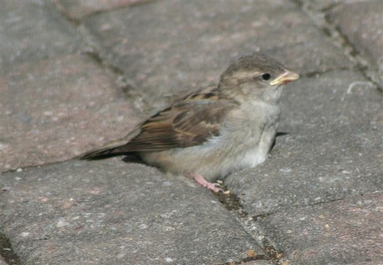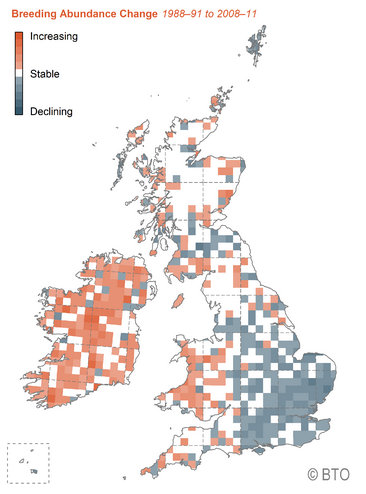House Sparrow

Brought up in Ayrshire, I knew this bird as speug. Other dialectal names include sparr, sparrer, spadger, spadgick, philip, spuggy, sprig and spatzie. Their systematic name is House Sparrow Passer domesticus.
It is one of our most familiar birds. The male House Sparrow has a chestnut brown back with black streaks, while the underparts, rump and crown are grey.The nape is chestnut brown, the cheeks are dull white, and they have a black eye stripe and bib. They also have a light wing bar. The beak is a yellow-brown in winter, but black in the summer, and the legs are pale brown. The female is paler and lacks the grey crown, white cheeks, black bib and eye stripe and chestnut brown nape, but has a straw coloured stripe behind the eye. The size of the bib indicates the dominance of the male bird within its community; the bigger the bib, the more dominant the bird.
The House Sparrow is strongly associated with human habitations, and can live in urban or rural settings. Though found in widely varied habitats and climates, it typically avoids extensive woodlands, grasslands, and deserts away from human development. It feeds mostly on the seeds of grains and weeds, but it is an opportunistic eater and commonly eats insects and many other foods.
The House Sparrow is native to most of Europe, the Mediterranean region, and much of Asia. Its intentional or accidental introductions to many regions, including parts of Australia, Africa, and the Americas, make it one of the most widely distributed wild birds. Noisy gregarious and it seems promiscuous, DNA research has shown that 15% of offspring are the result of either the cock or hen mating with another partner. These exploiters of man have managed to colonise most of the world, the ultimate avian opportunist.
Having said that, monitoring suggests a severe decline in the House Sparrow population in parts of the UK. For example, London is estimated to have lost three-quarters of its sparrows between 1994 and 2000. In England the population is recently estimated to have dropped by 71 per cent between 1977 and 2008. Whilst the decline in England continues, Breeding Bird Survey data indicate recent population increases in Scotland, Wales and Northern Ireland. The map shows the change in abundance between the national bird atlas of 1988-91 and the most recent one 2006-11. The cause of these changes remains a mystery, though many improbable theories have been put forward, ranging from unleaded petrol to the use of mobile phones.
Here on Arran the population of House Sparrows seems to be thriving with colonies in all of the settlements. With most pairs raising at least two and often three broods a year, numbers by the end of the breeding season can increase markedly. Incubation takes just eleven days, and two weeks later the young will leave the nest.

